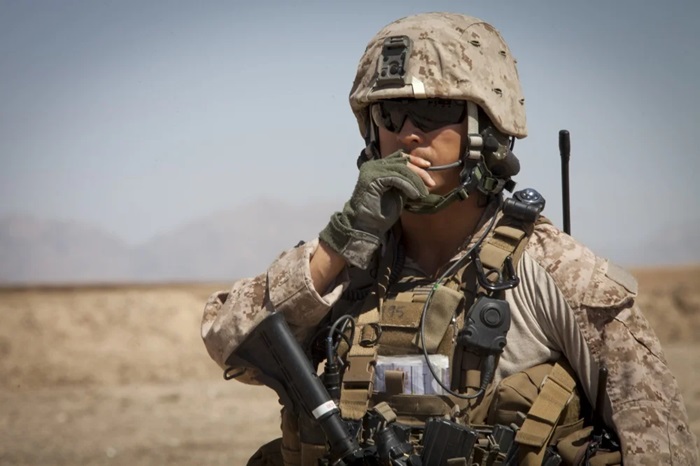The Backbone of Defense: Exploring the Different Types of Military Equipment

Military defense is a vast and complex field, with a wide array of equipment designed to safeguard national security and ensure readiness in times of conflict. From high-tech aircraft to heavily armored vehicles, each piece of military equipment serves a specific purpose in maintaining an effective defense strategy. In this blog post, we’ll explore the various types of military defense equipment, highlighting their roles in modern warfare and how they contribute to a nation’s defense infrastructure.
1. Ground Combat Equipment: Tanks and Armored Vehicles
Ground combat equipment forms the cornerstone of military operations, providing the essential protection and firepower necessary for troops to engage effectively on the battlefield. Tanks and armored vehicles are key components in this category, offering mobility, heavy firepower, and defense against enemy threats.
Tanks are heavily armored vehicles designed to carry large-caliber guns capable of destroying enemy vehicles and fortifications. The most iconic tank, the M1 Abrams, used by the United States, combines advanced armor with high-tech targeting systems, making it a formidable force on the battlefield. Tanks are essential in direct combat situations where troops need to break through enemy lines and establish ground dominance.
Armored Personnel Carriers (APCs) and Infantry Fighting Vehicles (IFVs) are designed to transport soldiers safely while providing them with fire support. These vehicles often come equipped with machine guns or cannons and offer bulletproof armor, ensuring the crew can navigate hostile environments with a higher degree of protection. Notably, the Stryker APC used by the U.S. Army has proven crucial in peacekeeping and combat operations worldwide.
2. Aircraft: Dominating the Skies
In modern warfare, air superiority is critical, and the use of military aircraft plays a pivotal role in both offensive and defensive operations. Aircraft can be divided into various categories, including fighter jets, bombers, and transport aircraft.
Fighter jets are arguably the most visible and crucial component of any air force. These planes are designed for air-to-air combat, intercepting and destroying enemy aircraft. One of the most famous fighter jets is the F-22 Raptor, which boasts advanced stealth capabilities, allowing it to avoid detection while engaging enemy targets. Stealth technology has revolutionized the way air forces operate, enabling aircraft to enter enemy airspace undetected and carry out precision strikes.
Bombers, on the other hand, are built for long-range missions and are equipped with the ability to deliver a devastating payload of bombs or missiles. The B-2 Spirit, another example of stealth technology, is a heavy bomber capable of striking high-value targets deep within enemy territory. Bombers are essential in strategic defense, able to incapacitate vital infrastructure and military installations.
Transport aircraft are indispensable for logistical operations. They move troops, supplies, and equipment to areas of conflict, ensuring that armed forces can maintain their strength and coordination. The C-17 Globemaster is a prime example of a military transport aircraft, capable of carrying heavy cargo and performing tactical airlift missions.
3. Naval Ships: Dominating the Seas
Naval defense plays an integral part in global military strategy. Control of the seas allows for the secure movement of troops and supplies and the ability to project power far from home shores. The backbone of naval defense equipment includes aircraft carriers, destroyers, and submarines.
Aircraft carriers are the flagship of any modern navy, serving as mobile airbases capable of launching and landing fighter jets. The USS Nimitz, one of the largest aircraft carriers in the world, can carry over 60 aircraft and serves as a powerful deterrent in international waters. Carriers provide a forward presence, enabling military forces to respond to crises anywhere in the world.
Destroyers and frigates are essential for providing protection to the fleet, offering defense against threats such as submarines, missile attacks, and air assaults. The Arleigh Burke-class destroyer is equipped with advanced radar and missile systems, making it a key component in fleet defense.
Submarines, especially nuclear-powered submarines, are another critical component in naval defense. Submarines can remain submerged for long periods, making them ideal for stealth operations. The Ohio-class nuclear submarine is capable of carrying and launching ballistic missiles, providing a second-strike capability in case of a nuclear conflict.
4. Missiles and Defense Systems: Precision and Protection
Missile technology has revolutionized modern warfare, allowing for precise strikes at long distances. Ballistic missiles and cruise missiles are used for strategic strikes, capable of carrying both conventional and nuclear warheads to distant targets. The Minuteman III missile, for example, is a land-based ballistic missile with an intercontinental range, serving as part of the United States’ nuclear deterrence strategy.
On the defensive side, missile defense systems are designed to intercept and destroy incoming missiles before they can reach their target. The Patriot missile system has proven effective in intercepting short- and medium-range ballistic missiles, while the THAAD (Terminal High Altitude Area Defense) system protects against high-altitude threats.
5. Unmanned Aerial Vehicles (UAVs): The Future of Warfare
UAVs, or drones, have emerged as a vital part of modern military strategy. These unmanned systems are used for intelligence gathering, surveillance, reconnaissance, and even combat missions. The MQ-9 Reaper drone is a prime example, capable of carrying out precision strikes while providing real-time intelligence. Drones allow military forces to conduct operations with minimal risk to human life, providing surveillance and targeting capabilities in hostile environments.
In Conclusion
Military defense equipment is a vast and complex domain, consisting of a diverse range of technologies aimed at safeguarding a nation’s security and interests. From ground combat assets such as tanks and armored personnel carriers to the cutting-edge power of fighter jets, naval vessels, and missile defense systems, each piece of equipment plays a vital role in determining the outcome of contemporary conflicts.
As advancements in technology continue, the tools of warfare will continue to evolve, ensuring that nations are equipped to meet the challenges of future defense needs. For example, chem film coating is increasingly being utilized to enhance the durability and corrosion resistance of military components, ensuring that critical equipment can withstand harsh conditions and maintain peak performance in the field. This innovation, along with other emerging technologies, underscores the ongoing evolution of military defense systems.







